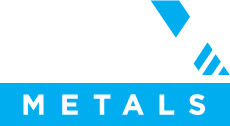Overview
PNX’s broad vision is through innovative and successful exploration and entrepreneurial initiatives to become a base metal/gold producer providing exceptional value for shareholders, for the benefit of our employees and for the communities in which we work.
PNX’s Occupational Health Safety and Environment (OHS&E) vision is for safe exploration, safe operations and zero harm to our people and the communities in which we work. PNX will operate and manage so as to respect and minimise impact upon the environment in which we work and to preserve and where possible, enhance the specific features and values of our environment and heritage. PNX believes that a safe, skilled and healthy workforce as well as exceptional environmental performance contributes to our communities and to business success.
PNX’s operations are based upon Sustainable Development Principles and is the transparent process by which the Vision will be achieved.
The Board is responsible for the overall corporate governance of PNX Metals Limited. This includes setting its strategic direction and objectives, and monitoring progress to the achievement of these goals.
The Company is not of a size, nor its affairs of such complexity, that a large Board and management structure, or the establishment of separate governance committees, is warranted at this time. The Board has developed a system of corporate and management protocols that conform to applicable regulations and standards. The conduct of the Company’s affairs will be governed by these protocols under the direct oversight of the entire Board.
To the extent that they are relevant to the Company, the protocols incorporate the Corporate Governance Principles and Recommendations (2nd Edition) as published by the ASX Corporate Governance Council.
Corporate Values
- As individuals and as a company, we will act with integrity, trust & respect and expect these Values from those with whom we engage
- Demand leadership in safety, stewardship of the environment and social responsibility
- Develop the best people in pursuit of excellence through safety
- Encourage appropriate use of technology and science to continually seek entrepreneurial solutions and a commitment to achievement
- Demand positive change by creating environments to encourage continuous improvement.
Risk Management
Whilst the Board is ultimately responsible for identifying and managing areas of significant business risk, it has delegated the management of this function to the Audit Committee. The Audit Committee is responsible for identifying and managing key Company risks and ensuring compliance with risk management policies and reporting of any non-compliance that occurs. The Company has created a Corporate Risk Register which lists and rates these risks in terms of likelihood and consequence, and also documents the controls in place to manage these risks.
The key areas of risk that have been identified are as follows:
- Financial
- Statutory/regulatory
- Legal
- Personnel and safety
- Asset management and protection
- Tenement management
- Information Technology and Security
- Community
- Environmental
The Company has no material exposure at present to economic, social, sustainability or environmental risks. Environmental risks associated with the Company’s exploration activities are addressed on an ongoing basis and are reviewed at least annually by the Board and Audit Committee.
Management ensures that the Risk Register is kept up-to-date on an ‘as needs’ basis so as to reflect changes in the Company’s business activities and risks, the law and current best practice within the mining industry. A thorough review of the Corporate Risk Register is undertaken by the management and the Audit Committee each year to identify any further risks, evaluate existing controls and, if necessary, develop and implement further strategies and action plans for minimising and controlling the risks.
The Audit Committee, in conjunction with management, has developed specific cost-effective strategies and action plans for minimising and treating the risks. The current control measures and improvement actions for minimising and managing each risk are noted in detail on the Company’s Corporate Risk Register and followed by employees and contractors.
The Board requires management to report to it at least annually in a comprehensive manner, and by exception at each Board meeting, on compliance with the Company’s Risk Management policies and whether the Company’s material business risks are being managed effectively. While the Company does not have an Internal Audit function, the comprehensive risk review process is seen by the Board as an effective and appropriate substitute for the Internal Audit function.
The Board receives assurance from the MD & CEO and Chief Financial Officer, as part of the statutory financial reporting process, that the declaration provided in accordance with section 295A of the Corporations Act 2001 is founded on a sound system of risk management and internal control and that the system is operating effectively in all material respects in relation to financial reporting risks.
